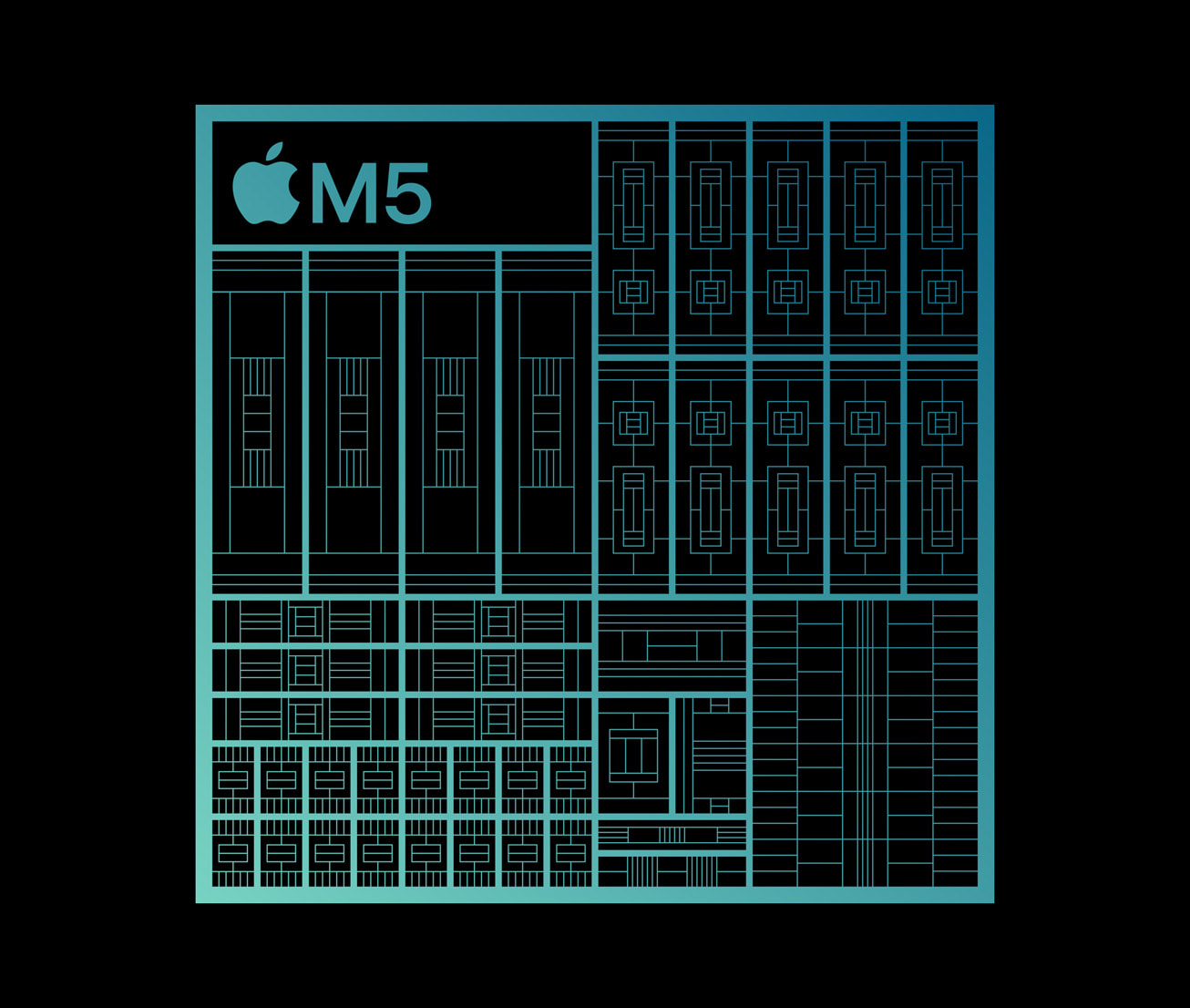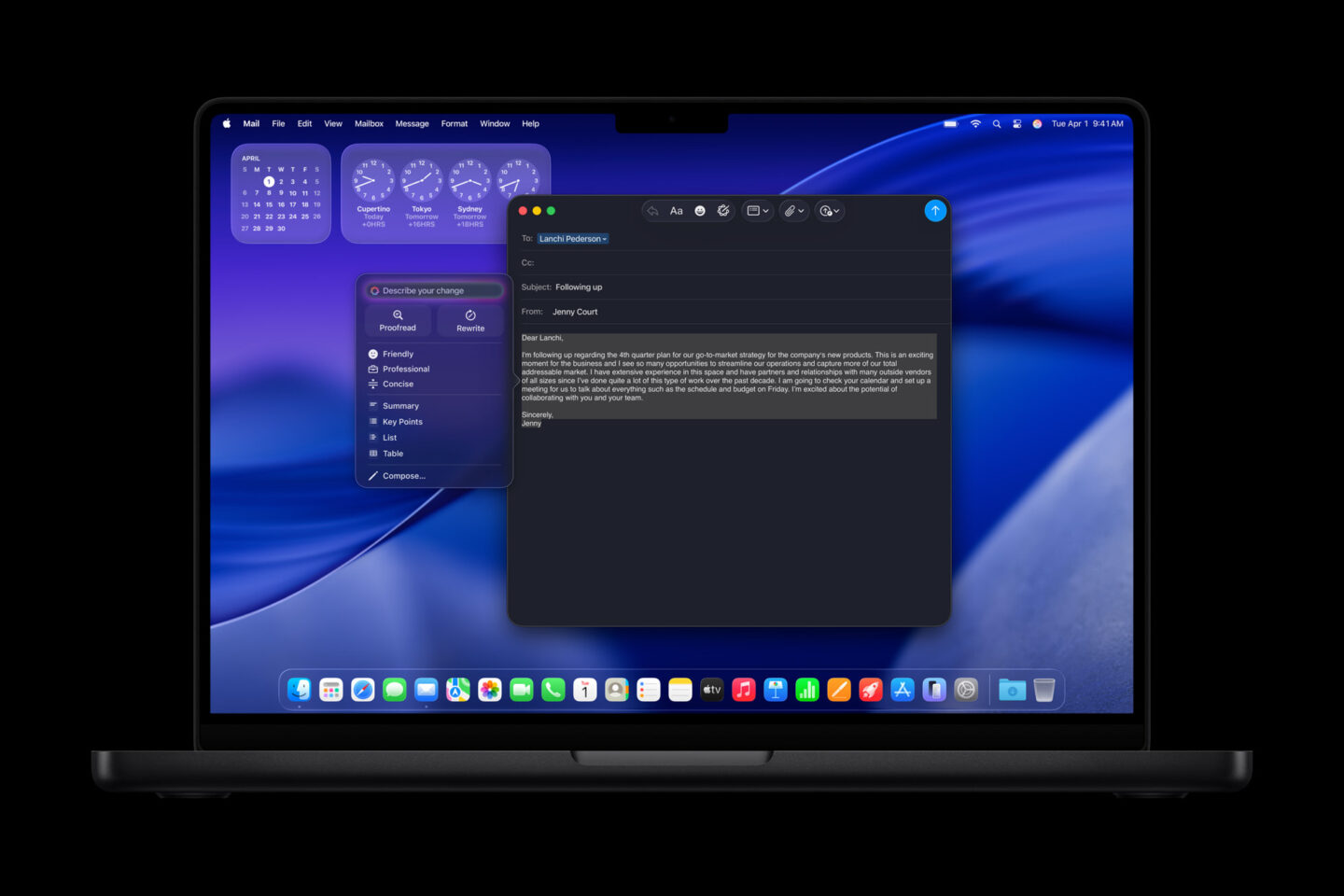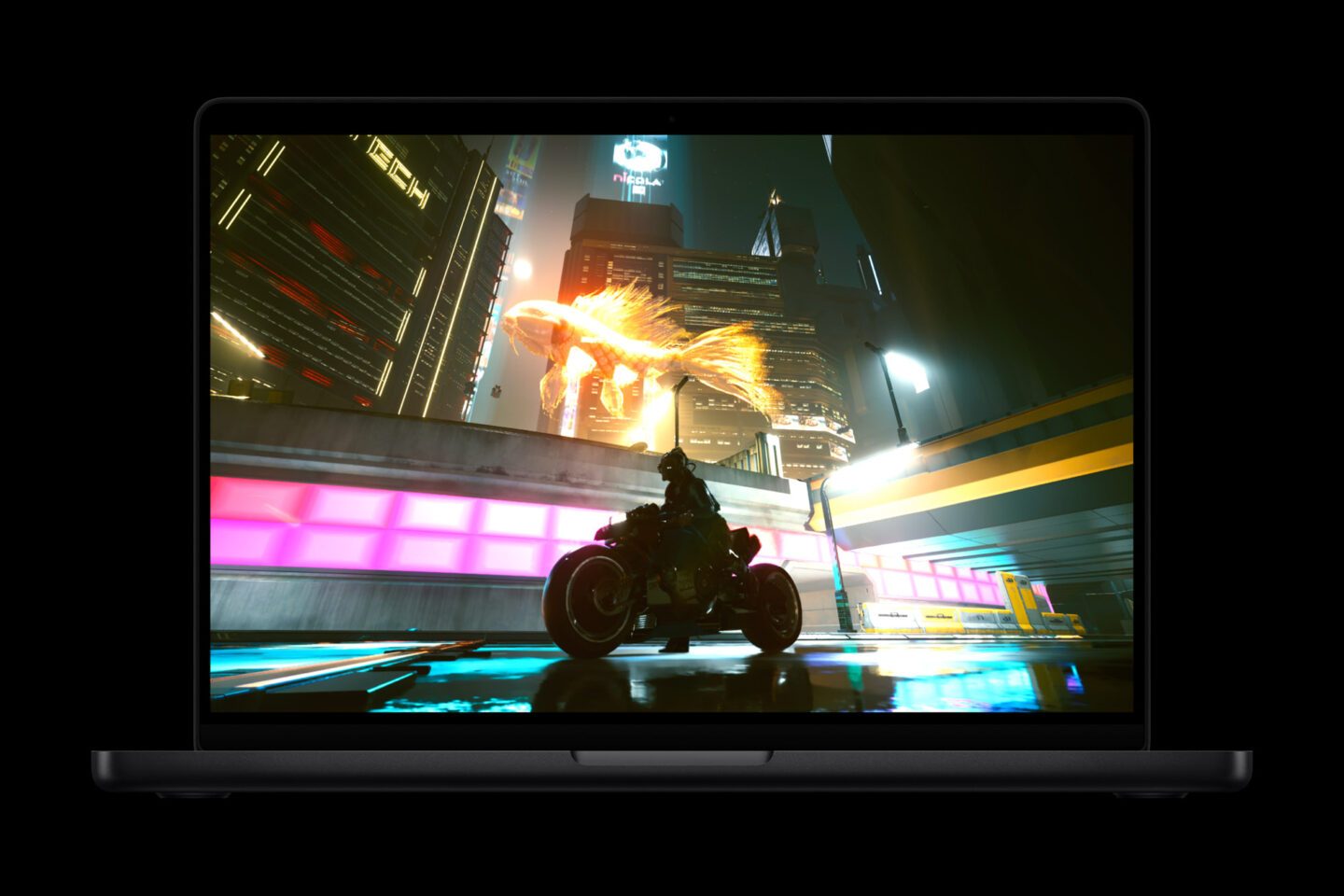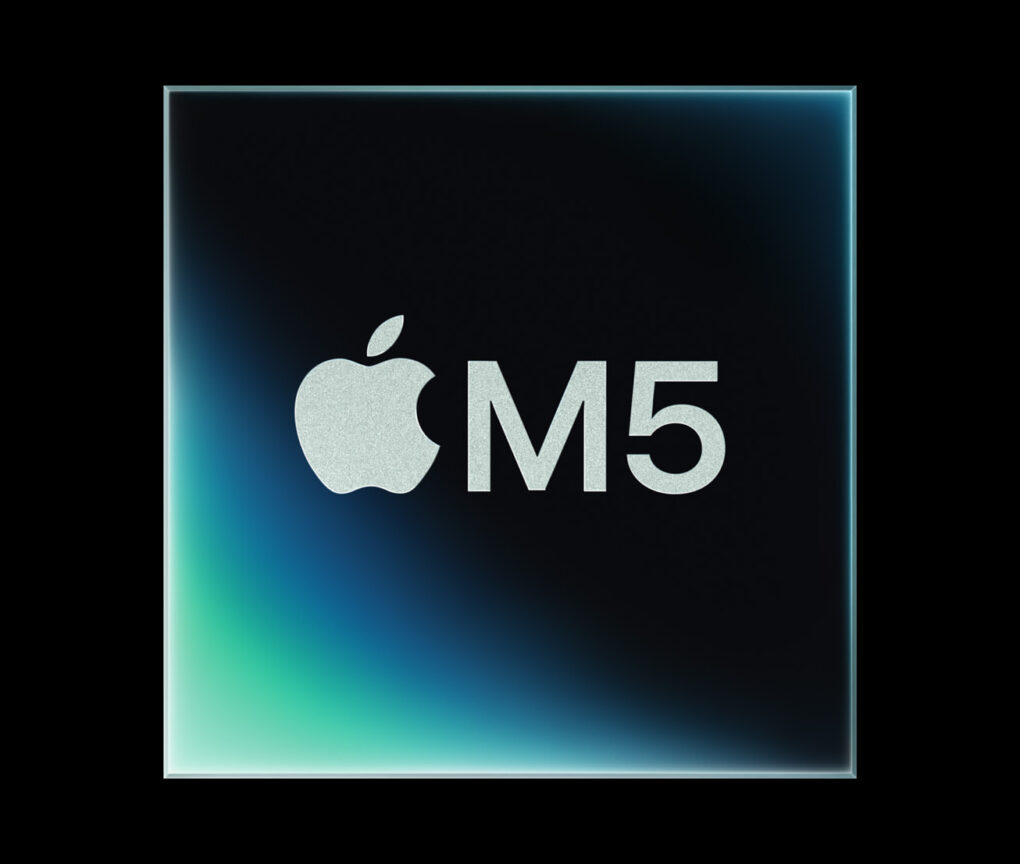Apple’s new M5 chip packs more power than predecessors, with advanced performance for Apple Intelligence and pumped up GPU performance boosting graphics processing, among other incremental improvements across the chip.
“M5 ushers in the next big leap in AI performance for Apple silicon,” said Johny Srouji, Apple’s senior vice president of Hardware Technologies. “With the introduction of Neural Accelerators in the GPU, M5 delivers a huge boost to AI workloads.”
“Combined with a big increase in graphics performance, the world’s fastest CPU core, a faster Neural Engine, and even higher unified memory bandwidth,” he added, “M5 brings far more performance and capabilities to MacBook Pro, iPad Pro and Apple Vision Pro.”
Apple M5 chip pumps up AI and graphics processing power
The powerful new M5 chip will power the new 14-inch MacBook Pro, iPad Pro and Vision Pro, all of which are available for pre-order starting Wednesday.
M5’s headlining feature is its completely redesigned GPU architecture. Apple embedded a dedicated Neural Accelerator into each of the 10 GPU cores, a first for the M-series chip design (already exists in A19 chip). This architectural change delivers over four times the peak GPU compute performance for AI tasks compared to the M4, and more than six times the performance of the M1 chip. Leaked benchmarks supported this.
For users, this means dramatically faster processing when running AI-driven applications, Apple said. Apps like Draw Things, which uses diffusion models to generate images, will see significant performance improvements. Similarly, users running large language models locally through platforms like webAI will experience much faster response times.
The GPU improvements extend beyond AI workloads. Enhanced shader cores deliver up to 30 percent faster graphics performance compared to M4, and up to 2.5 times faster performance than M1. Apple’s third-generation ray-tracing engine provides an additional 45 percent graphics uplift in applications that use ray tracing, bringing more realistic lighting and shadows to games and 3D applications.
For gamers and creative professionals, this translates to smoother gameplay, more realistic visuals in 3D applications, and faster rendering times for complex graphics projects. The GPU also features rearchitected second-generation dynamic caching, which helps optimize performance across different types of workloads.
The world’s fastest CPU core

Photo: Apple
The M5 features what Apple claims is the world’s fastest performance core. The chip includes up to a 10-core CPU configuration, with six efficiency cores handling lighter tasks and up to four performance cores tackling demanding workloads. Together, these cores deliver up to 15 percent faster multithreaded performance compared to the M4.
This performance boost means users can expect snappier responsiveness across the board, from launching applications to compiling code to processing large datasets.
Enhanced Neural Engine for on-device AI

Photo: Apple
Complementing the Neural Accelerators in the GPU, the M5 includes an improved 16-core Neural Engine. This dedicated AI processor delivers powerful machine learning performance with exceptional energy efficiency, making M5 fully optimized for AI workloads across all its components.
The faster Neural Engine powers many of Apple’s on-device AI features. Apple Intelligence tools like Image Playground will operate more quickly, and the overall performance of Apple’s AI models benefits from both the faster Neural Engine and the increased unified memory bandwidth.
For Apple Vision Pro users, AI-powered features like transforming 2D photos into spatial scenes in the Photos app or generating a Persona will work with greater speed and efficiency. Developers using Apple’s Foundation Models framework will also see performance improvements when building AI-powered features into their apps.
More memory bandwidth for demanding workflows

Photo: Apple
Apple has increased the unified memory bandwidth to 153GB/s in the M5, representing nearly a 30 percent improvement over M4 and more than double the bandwidth of M1. The unified memory architecture allows the CPU, GPU, and Neural Engine to all access the same large pool of memory, which is particularly important for AI workloads.
This increased bandwidth enables devices powered by M5 to run larger AI models entirely on-device, without needing to send data to the cloud. It also provides headroom for demanding multitasking scenarios—users can run resource-intensive creative applications like Adobe Photoshop and Final Cut Pro simultaneously while uploading large files in the background.
With support for up to 32GB of memory capacity, the M5 provides plenty of room for professional workflows and complex AI models.
Built on advanced manufacturing technology

Photo: Apple
The M5 is manufactured using third-generation 3-nanometer technology, which helps deliver its combination of high performance and energy efficiency. The power-efficient design aligns with Apple’s broader environmental goals under its Apple 2030 initiative, which aims for carbon neutrality across the company’s entire footprint by the end of the decade.
The efficiency of the M5 helps the new MacBook Pro, iPad Pro, and Apple Vision Pro meet Apple’s energy efficiency standards while reducing the total energy consumed over each product’s lifetime.
Developer support and integration
Apple designed the M5 GPU architecture to work seamlessly with its software frameworks. Applications using Core ML, Metal Performance Shaders, and Metal 4 will automatically see performance increases without requiring code changes.
Developers who want to directly leverage the new Neural Accelerators can do so using Tensor APIs in Metal 4.
Device-specific improvements
Each device powered by M5 benefits in unique ways. The Apple Vision Pro, for instance, now renders 10 percent more pixels with its micro-OLED displays and supports refresh rates up to 120Hz, resulting in crisper details, more fluid display performance, and reduced motion blur.
The new 14-inch MacBook Pro and iPad Pro gain substantial performance improvements for both creative and AI-driven workflows, making them more capable tools for professionals and power users.
With the M5, Apple continues to push the boundaries of what’s possible with custom silicon, particularly in the emerging field of on-device AI processing. All three devices powered by M5 are available for pre-order starting today.
Source: Apple


